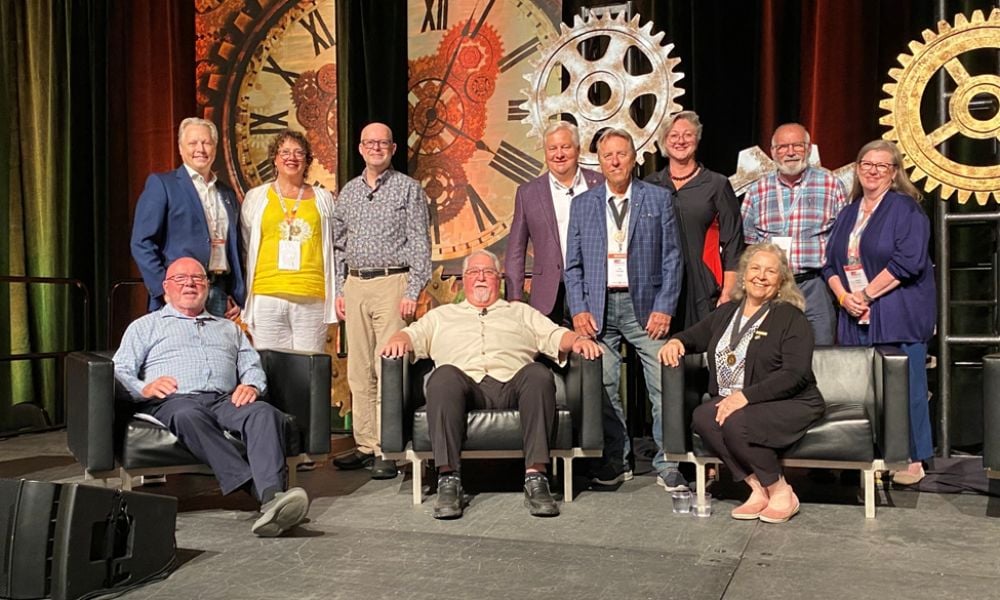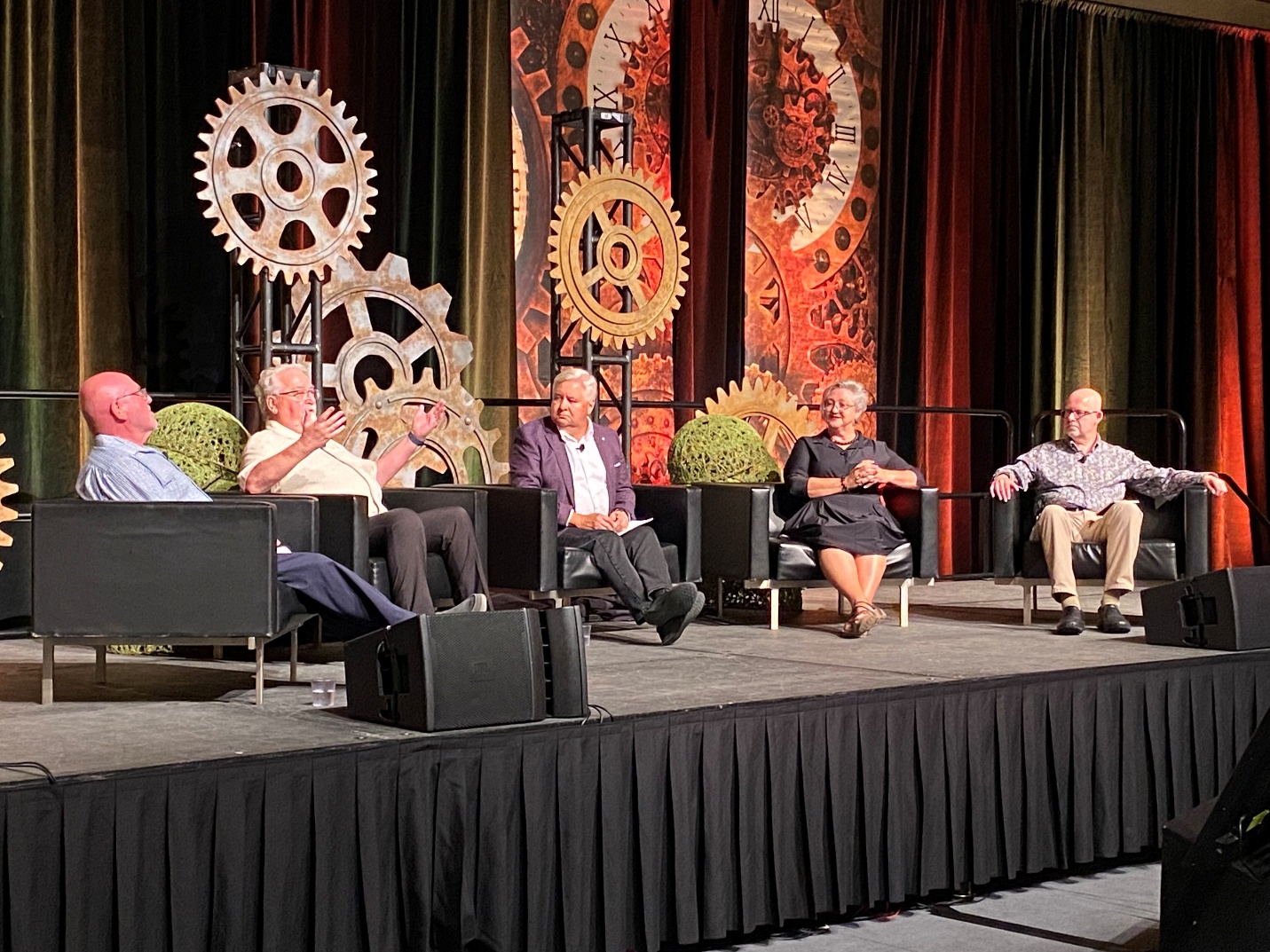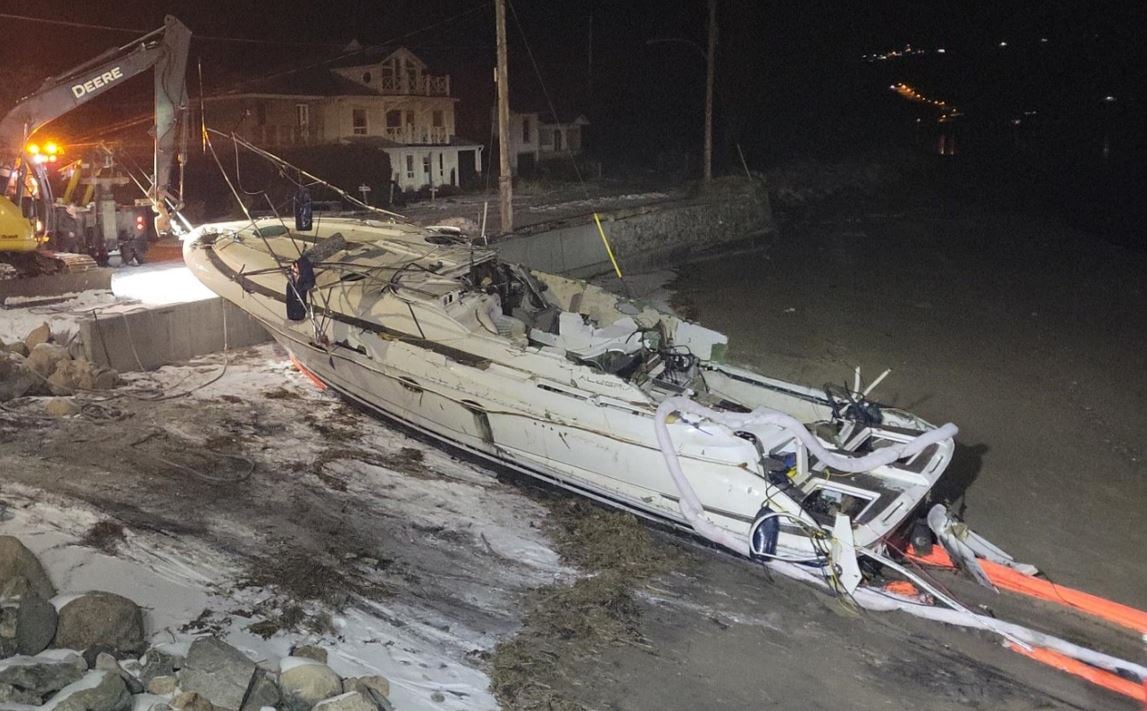Former presidents reminisce and plan for the future of the profession

The Health and Safety Professionals Canada (HSPC) organization, formerly known as the Canadian Society of Safety Engineering (CSSE), has a storied history marked by significant milestones and a steadfast commitment to improving workplace safety. The organization has evolved dramatically since its inception, adapting to the changing landscape of occupational health and safety. This evolution was celebrated and scrutinized during the 'Past Presidents’ Fireside Chat – Interactive Panel Discussion' at the recent Health and Safety Professionals Canada Professional Development Conference in Edmonton, Alberta. Moderated by Peter Sturm, a former HSPC president, the panel featured past presidents who reflected on the organization's journey and envisioned its future.
Journey through time
From its humble beginnings in 1949, HSPC has grown into a formidable force in the safety profession. John Boerefyn, who served as president from 2002 to 2004, reminisced about the organization’s early days. "My tenure on the board started in 1977 when the organization was divided into five regions with 28 chapters. We faced financial challenges, but we persevered and grew through strategic decisions and increased professional education courses," Boerefyn recalled.
The organization’s international presence has been bolstered by its members' participation in global safety initiatives. Art Nordholm, president from 2008 to 2010, highlighted his involvement in high-profile investigations, including the Deepwater Horizon disaster. "We began to illuminate CSSE within the world. Our participation in international conferences and investigations showcased our expertise and commitment," Nordholm shared.
 (From left to right: John Boerefyn, Art Nordholm, Peter Sturm, Eldeen Pozniak, Andrew Cooper)
(From left to right: John Boerefyn, Art Nordholm, Peter Sturm, Eldeen Pozniak, Andrew Cooper)
Reflecting on progress
The panel underscored the critical role of networking and collaboration in HSPC's success. Eldeen Pozniak, president from 2006 to 2008, emphasized the importance of building relationships within the safety community. "We are only as strong as our social safety network. This organization has given us the platform to share knowledge and learn from each other," Pozniak noted. Her global experiences have shown her that safety practices can benefit immensely from international collaboration.
Andrew Cooper, who led HSPC from 2012 to 2014, highlighted the technological advancements that have transformed the safety profession. "The sum total of most human knowledge is now accessible at our fingertips. Technology has revolutionized how we communicate and share knowledge, making us more effective as safety professionals," Cooper explained.
The integration of technology into safety practices has been a recurring theme throughout the three-day conference. "We must embrace the latest technological advancements, from AI to wearable tech, to stay ahead. However, it's crucial that we don't lose sight of the human element in our profession," Cooper added.
Charting the future
The conversation inevitably turned to the future of HSPC and the challenges that lie ahead. Current HSPC president Dave Turner outlined his vision for a competency-based organization that prioritizes professional development and mentorship. "We need to move forward and get into the 21st century, ensuring that our board members possess the right competencies. Our goal is to be seen as professionals, akin to doctors or engineers, recognized for our expertise and contributions to society," Turner stated, referring to the long-time fight for title protection that many safety professionals have been advocating for throughout their entire careers.
Challenges and opportunities
As the panel discussion ended, the former presidents reflected on the ongoing challenges in the safety profession. Pozniak pointed out the disparity in safety practices across different regions and industries. "We have a global world with varying levels of safety commitment. Our challenge is to bridge these gaps and ensure consistent, high-quality safety standards everywhere," she said.
The importance of soft skills, such as communication and influence, was also emphasized. "Safety professionals often lack the power to enforce changes, so we must rely on our ability to influence and negotiate. Building trust and credibility is essential," said Turner after the panel conversation ended.
A vision of unity and professionalism
The past presidents’ panel was a testament to HSPC's rich history and its ongoing mission to advance workplace safety. The organization’s leaders are united in their vision of a future where safety professionals are recognized with government enforced title protection for their critical role in enhancing workplace health and safety both in Canada, and around the world.
As HSPC continues to evolve, it remains committed to its core values of professionalism, competency, and collaboration. The insights shared during the 'Past Presidents’ Fireside Chat' underscore the organization's resilience and adaptability, promising a bright future for the safety profession in Canada and beyond.





